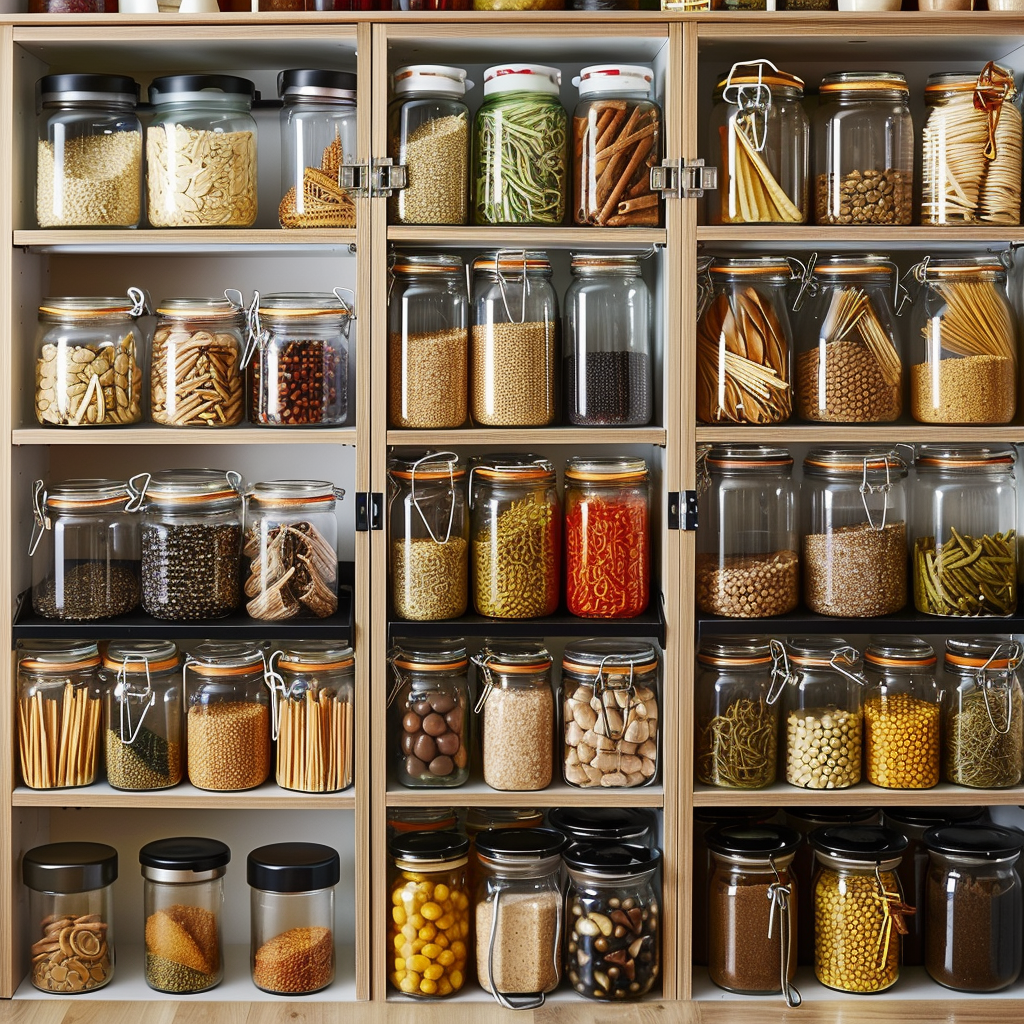A well-organized kitchen is the heart of a happy home, where meals are prepared with ease and enjoyment. Whether you have a small galley kitchen or a spacious culinary haven, these strategies will help you optimize your kitchen space for efficiency and functionality.
1. Purge Unused Items
Start by decluttering your kitchen and getting rid of items you no longer use or need. Toss expired food, donate unused appliances, and recycle or discard broken or duplicate items. Clearing out clutter will create more space and make it easier to organize your kitchen essentials.
2. Maximize Cabinet Space
Make the most of your cabinet space by using stackable shelves, risers, and drawer organizers. Arrange items by category and store them in designated zones to streamline meal preparation and cooking. Utilize vertical space by installing hooks or racks on cabinet doors for hanging pots, pans, and utensils.
3. Optimize Drawer Storage
Organize your kitchen drawers with dividers and inserts to keep utensils, gadgets, and small tools neatly sorted and accessible. Consider using drawer organizers with adjustable compartments to accommodate different-sized items and maximize storage efficiency. Labeling drawers can also help family members find what they need quickly.
4. Utilize Vertical Storage
Take advantage of vertical wall space by installing open shelves, pegboards, or magnetic strips to store cookware, spices, and kitchen accessories. Display frequently used items within easy reach, while keeping less-used items higher up. Vertical storage not only saves space but also adds visual interest to your kitchen decor.
5. Arrange Pantry Essentials
Organize your pantry by grouping similar items together and arranging them on shelves according to frequency of use. Use clear containers or baskets to corral snacks, grains, canned goods, and baking supplies. Label containers for easy identification and maintain a rotating inventory to prevent food waste.
6. Create Zones for Efficiency
Designate specific zones in your kitchen for different tasks, such as meal prep, cooking, baking, and storage. Arrange your kitchen layout to facilitate a smooth workflow, with key tools and ingredients within arm’s reach of each zone. Minimize unnecessary movement by keeping frequently used items close to where they’re needed.
7. Invest in Space-Saving Solutions
Consider investing in space-saving kitchen gadgets and appliances to maximize efficiency and minimize clutter. Look for multi-functional tools, collapsible storage containers, and compact appliances that perform multiple tasks or can be easily stored when not in use. Choose items that fit your cooking style and kitchen layout.
8. Keep Countertops Clear
Maintain a clutter-free countertop by storing only essential items within reach. Keep frequently used tools, utensils, and appliances accessible while stowing away less-used items in cabinets or drawers. Clear countertops create a sense of spaciousness and make it easier to prep and cook meals without distractions.
9. Label and Rotate Supplies
Label containers, jars, and storage bins to identify contents and expiration dates at a glance. Implement a first-in, first-out (FIFO) system for pantry items and perishable goods to prevent food waste and ensure freshness. Regularly check and rotate supplies to use older items before newer ones.
10. Clean and Maintain Regularly
Maintain your organized kitchen by cleaning and tidying up regularly. Wipe down countertops, sweep or vacuum floors, and wash dishes promptly to prevent clutter from accumulating. Schedule regular deep cleaning sessions to tackle appliances, cabinets, and hard-to-reach areas for a fresh and inviting kitchen space.
By implementing these strategies for organizing your kitchen, you’ll create a functional and efficient cooking space that enhances your culinary experience and makes meal preparation a breeze. With careful planning and thoughtful organization, your kitchen will become a welcoming hub where you can enjoy cooking, dining, and gathering with loved ones.



